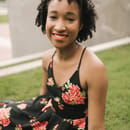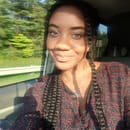Recently, I came across a statement from “Star Wars” writer Jonathan Kasdan confirming that Lando Calrissian was indeed pansexual. In the Huffington Post article, the writers are praised for finally introducing queer representation to the franchise was severely lacking.
But then the movie came out.
As you can guess, nary was a mention of Lando’s pansexuality, except a very weird and poorly executed (“possible”) hint of a relationship with a curvy lady droid. And unfortunately, this is a story we’ve heard a thousand times before.
Whether it is pre or post a movie, book or tv shows release, a creative tells the public that a character is queer without it being explicitly shown. Or if it is, it’s so miniscule that it means bupkis.
We saw this mess back in 2007 with JK Rowling’s gay Dumbledore reveal. We saw it again ten years later with LeFou’s coming out the closet moment. And here we are yet again with Lando.
Now the problem clearly isn’t the inclusion of queer characters in these big name franchises. In fact I highly encourage it. LGBT representation in mainstream media has always been a barren wasteland. Unless you were the sassy best friend or transphobic punchline, fat chance that there was going to be representation for you.
And if there’s any company that has a tumultuous history with queer representation it’s Disney. For years, Disney has coded many of their characters, particularly their villains, as queer. Queercoding occurs when a character’s appearance, expressiveness or gender performance is supposed to read as queer. Effeminate male characters such as Jafar from “Aladdin” and Scar from “the Lion King”, while not explicitly stated as such, are supposed to be seen as queer: a foil to our manly and heterosexual protagonists. Shoot, even Ursula was based off the drag queen, Divine.
But with films such as “Love, Simon” and characters such as, inclusion is the highest it’s ever been. However, unless the narrative seems to center around the character’s sexuality, there never seems to be a need to add them. Unless of course as a footnote after the fact.
Let’s use Dumbledore as an example.
When questioned about exclusion of Dumbledore’s sexuality from the books, Rowling stated that it made no sense that a headmaster would disclose his sexual preferences to his students. Which was, at least to me, a logical conclusion to come too. However with the release of the prequels providing perfect opportunity to showcase this, director David Yates states that Dumbledore’s “sexuality won’t be explicitly stated” .
“But why must it be explicitly stated?”, you ask, “Isn’t enough that the author confirmed it off-screen?”
That’s the thing. It’s not enough. It’s the easy way out.
Openly supporting/ including gay characters into your works is unfortunately viewed as a political statement as opposed to a creative decision. And companies know that being the more outright “political” your work is too one side of the spectrum, the more polarizing it becomes. And homophobic money spends just like the rest.
TV shows like Rizzoli and Isles will purposely go out of their way to bait a relationship between same-sex characters in order to draw in a queer market, but not actually provide any payoff.
In Rizzoli and Isles, actress Harmon admits it, stating that during takes, “I’ll brush by [Maura’s] blouse or maybe linger for a moment. As long as we’re not being accused of being homophobic, which is not in any way true and completely infuriating, I’m OK with it.”
Doing foolishness like this allows you to ride this apolitical middle ground where you can still the praise of having representation without actually having to write a queer character with depth and complexity.
But the problem with this is that we need characters like that. Media representation not only reveals how we see the world around us but can also change how we see the world as well. Normalizing LGBT people in the eyes of others is an easy way to humanize the community. Not to mention how the LGBT community sees themselves.
Growing up, bisexual was not a word that was in my vocabulary. I couldn’t rationalize my attraction for multiple genders and felt like I had no one around who was like me. A bisexual character would’ve made me feel so much less alone. Many say that relatability doesn’t come from the color of someone’s skin or who they want to kiss, but from the strength of the storytelling. And I agree. Without a good story, it doesn’t matter how many queer characters you have.
But it’s easy to say that when most character look, act and love just like you do.
And if the characters’ sexuality doesn’t matter, why not make them queer?



